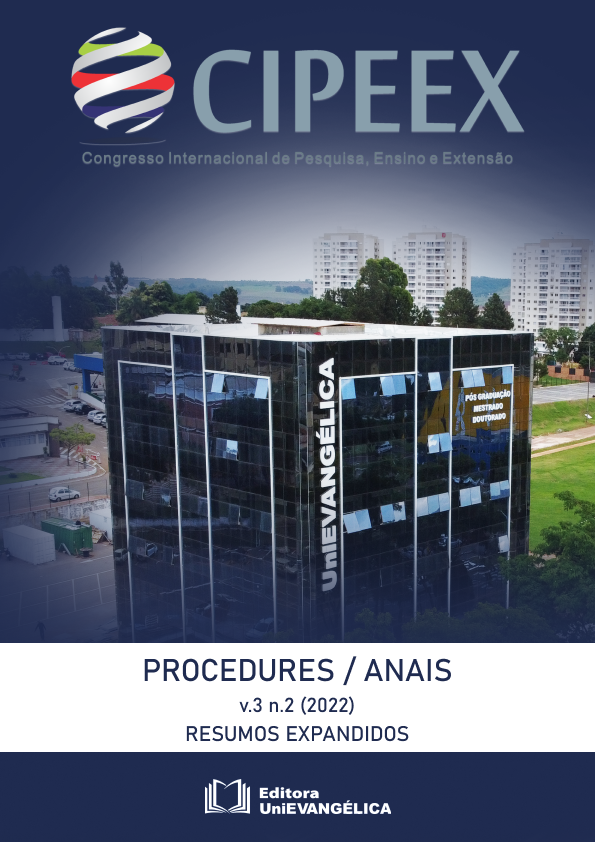ACTIVE MOBILITY, PHYSICAL ACTIVITY AND HEALTH IN SCHOOLS
Palavras-chave:
Physical activity, Adolescents, Walking, Cycling, active mobilityResumo
Active transportation or active mobility is understood as any form of non-motorized movement that requires some physical effort. International organizations have been encouraging active transportation on the home-to-school route as a way to incorporate physical activity into the daily lives of young people. Among the various forms of active transportation, the most common active commutes are those made on foot or by bicycle. The research measuring the real impact and benefits on the health of people who adopt this mode of transportation, especially in the school context, is still incipient and inconclusive. The present study aims to evaluate the impacts of active transportation on the increase of physical activity, health, and well-being of schoolchildren. This is a prospective cohort analytical observational study. The groups will be classified as users and non-users of active transportation on the home-to-school route. Adolescents aged between 10 and 17 years who are regularly enrolled in state public schools under the Regional Coordination of Education of Goianésia, covering 8 municipalities, will participate in the study. Approximately 375 participants are estimated. The variables, physical activity and active commuting, will be assessed at two distinct times (beginning and end of the academic semester).
Referências
Abarca-Gómez, L. et al. (2017). Worldwidetrends in body-mass index, underweight, overweight, andobesityfrom 1975 to 2016: a pooledanalysisof 2416 population-basedmeasurementstudies in 128• 9 millionchildren, adolescents, andadults. The Lancet, v.390, n.10113:2627-2642.
Andrade V., Rodrigues J., Mariano F., Lobo Z. (2016) (organizadores). Mobilidade por bicicleta no Brasil. Rio de Janeiro: PROURB/UFRJ.
Bauman, A.E. et al. (2012) Correlates of physical activity: why are some people physically active and others not? The lancet, v.380, n. 9838:258-271.
Decastro, J. et al. (2018). PolÃticas cicloinclusivas no planejamento do turismo no Brasil: um estudo sobre as cidades-sede da Copa do Mundo FIFA 2014. Revista Acadêmica Observatório de Inovação no Turismo, [S. l.], v. XII, n. 1:66–85.
de Matos, S.M.A. et al. (2018). What factor sex plain bicycling and walking for commuting by ELSA-Brasil participants? American Journal of Health Promotion, v. 32, n. 3:646-656.
Florindo, A.A., Hallal, P.C. (2011). Epidemiologia da atividade fÃsica. In Epidemiologia da atividade fÃsica (pp. xviii-210).
Giles-Corti, B. et al. (2016) City planning and population health: a global challenge. The lancet, v. 388, n. 10062:2912-2924.
Lorenc, T.et al. (2008). Attitudestowalkingandcyclingamongchildren, youngpeopleandparents: a systematicreview.JournalofEpidemiology&Community Health, v. 62, n. 10:852-857.
Mason, J.,Fulton, L., &McDonald, Z. (2015). A global high shift cyclingscenario. Retrievedfrom.
Neto, C, &Malho, M.J. (2007). Espaço urbano e a independência de mobilidade na infância, 2004.
Oliveira-Silva, I.,& Billerbeck, N.C. (2020). Transporte ativo: que ideia é esta? Educação fÃsica, infância e saúde em discussão: coletânea de estudos 2,15.
Sá, T.H. et al. (2016). Socioeconomic and regional differences in active transportation in Brazil.Revista de saúde pública, v. 50:1-9.
World Health Organization (2014).Global status report on non-communicable diseases 2014.





